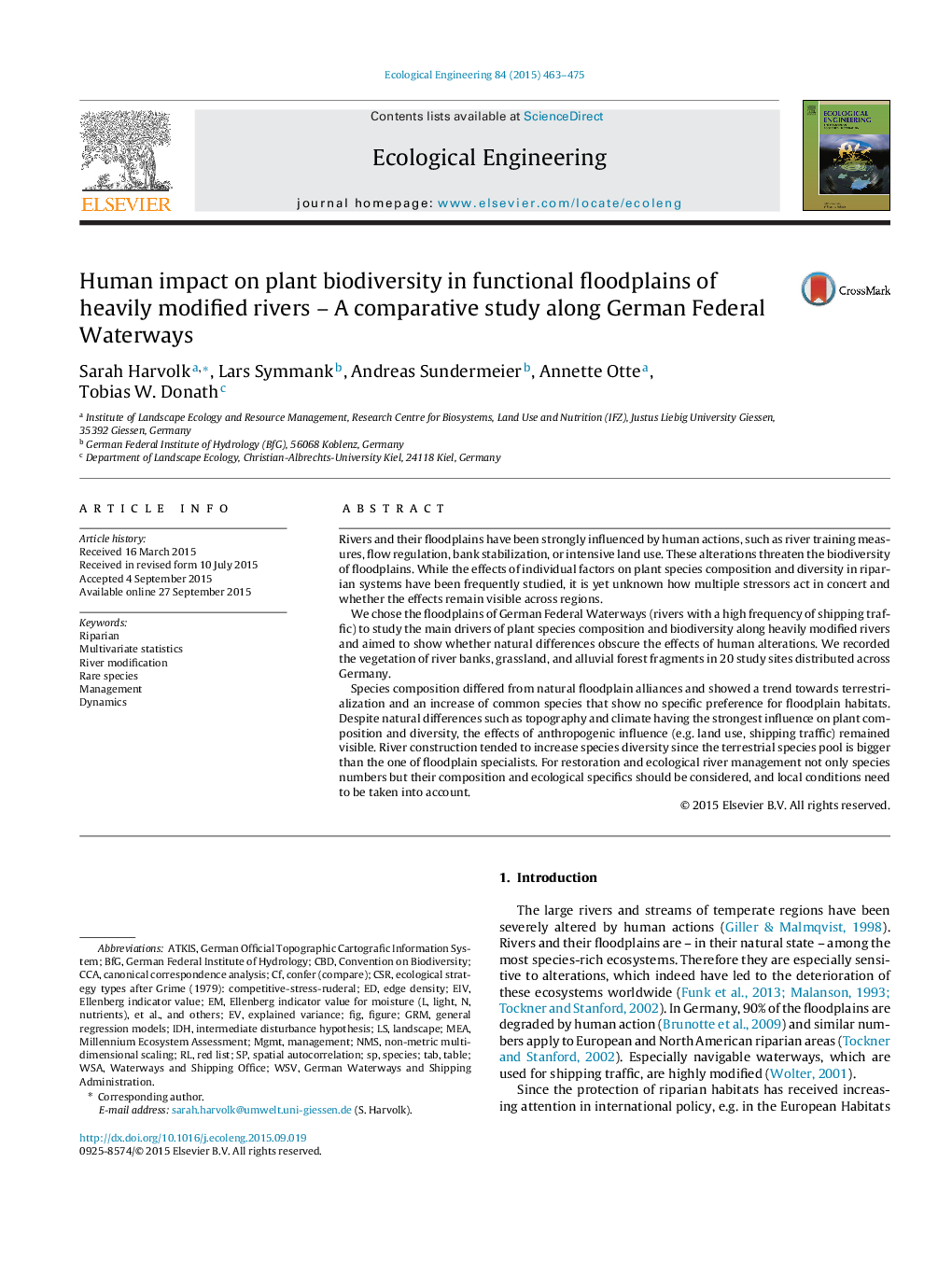| Article ID | Journal | Published Year | Pages | File Type |
|---|---|---|---|---|
| 4388815 | Ecological Engineering | 2015 | 13 Pages |
•Floodplain species are lost and impacted systems show terrestrialization trends.•Natural differences have a higher influence than human alterations.•Human actions can be related to biodiversity despite those natural differences.•Species richness is less meaningful for ecological value than species composition.•Restoration should consider composition, ecological value and local specifics.
Rivers and their floodplains have been strongly influenced by human actions, such as river training measures, flow regulation, bank stabilization, or intensive land use. These alterations threaten the biodiversity of floodplains. While the effects of individual factors on plant species composition and diversity in riparian systems have been frequently studied, it is yet unknown how multiple stressors act in concert and whether the effects remain visible across regions.We chose the floodplains of German Federal Waterways (rivers with a high frequency of shipping traffic) to study the main drivers of plant species composition and biodiversity along heavily modified rivers and aimed to show whether natural differences obscure the effects of human alterations. We recorded the vegetation of river banks, grassland, and alluvial forest fragments in 20 study sites distributed across Germany.Species composition differed from natural floodplain alliances and showed a trend towards terrestrialization and an increase of common species that show no specific preference for floodplain habitats. Despite natural differences such as topography and climate having the strongest influence on plant composition and diversity, the effects of anthropogenic influence (e.g. land use, shipping traffic) remained visible. River construction tended to increase species diversity since the terrestrial species pool is bigger than the one of floodplain specialists. For restoration and ecological river management not only species numbers but their composition and ecological specifics should be considered, and local conditions need to be taken into account.
Graphical abstractFigure optionsDownload full-size imageDownload as PowerPoint slide
